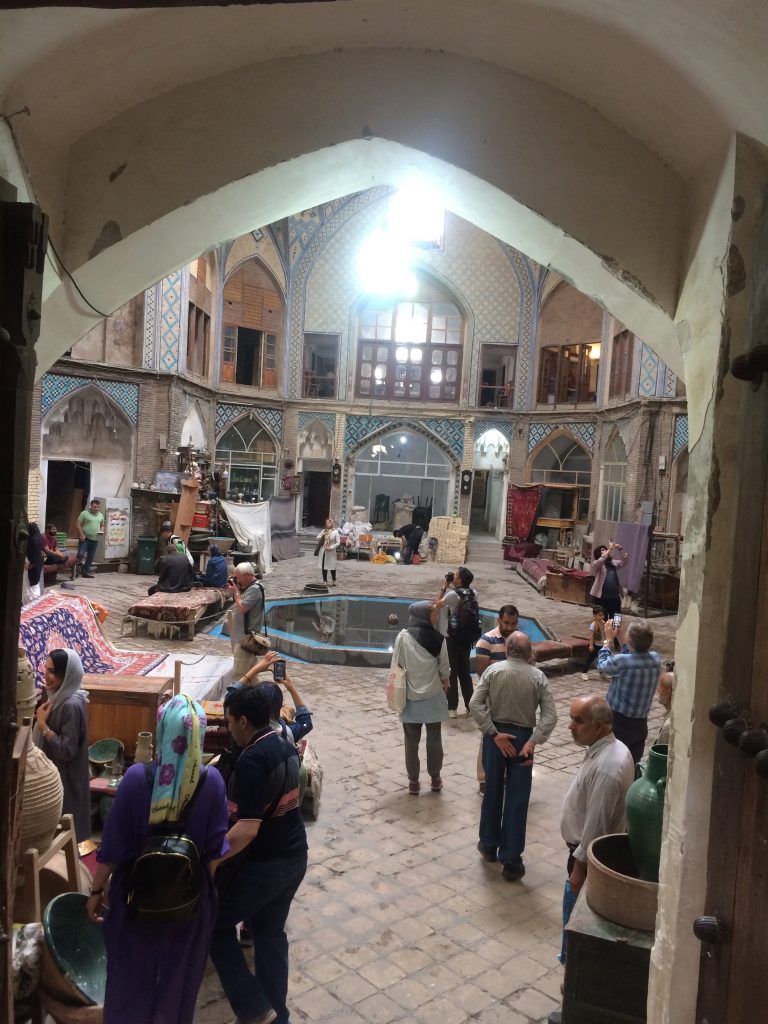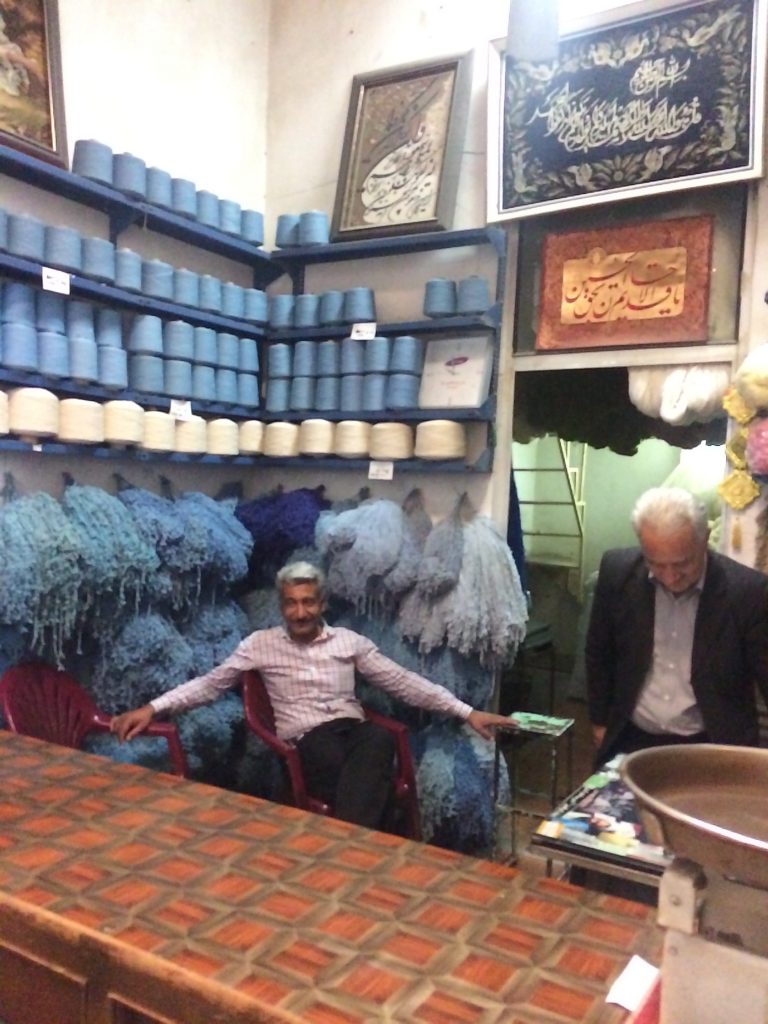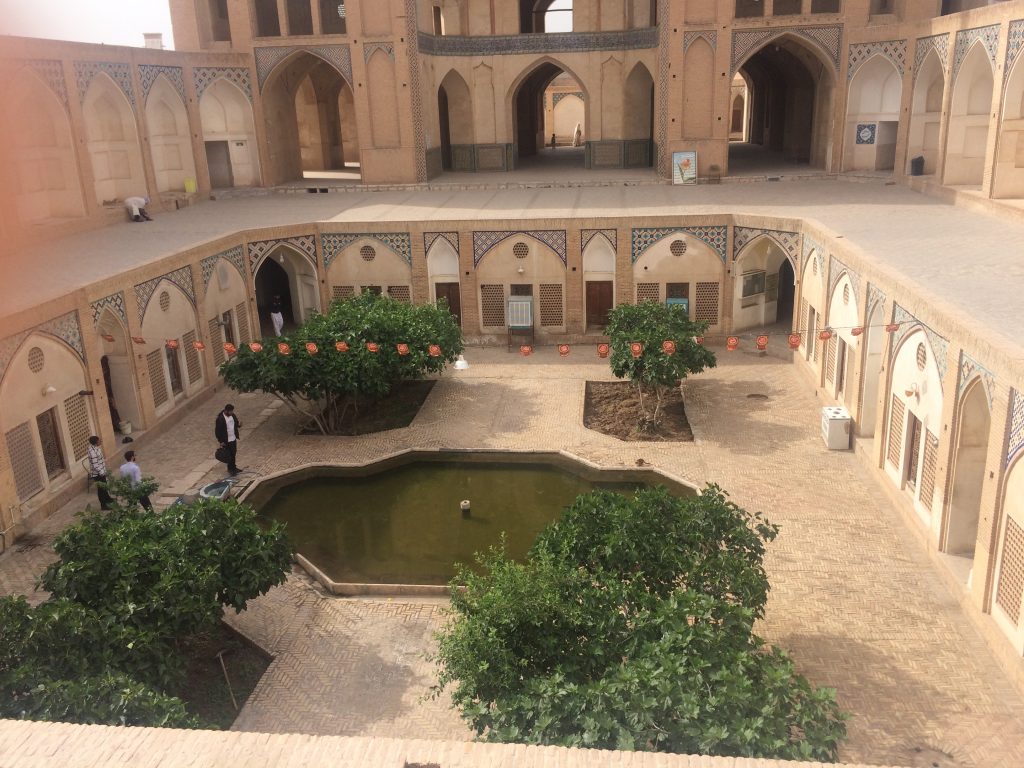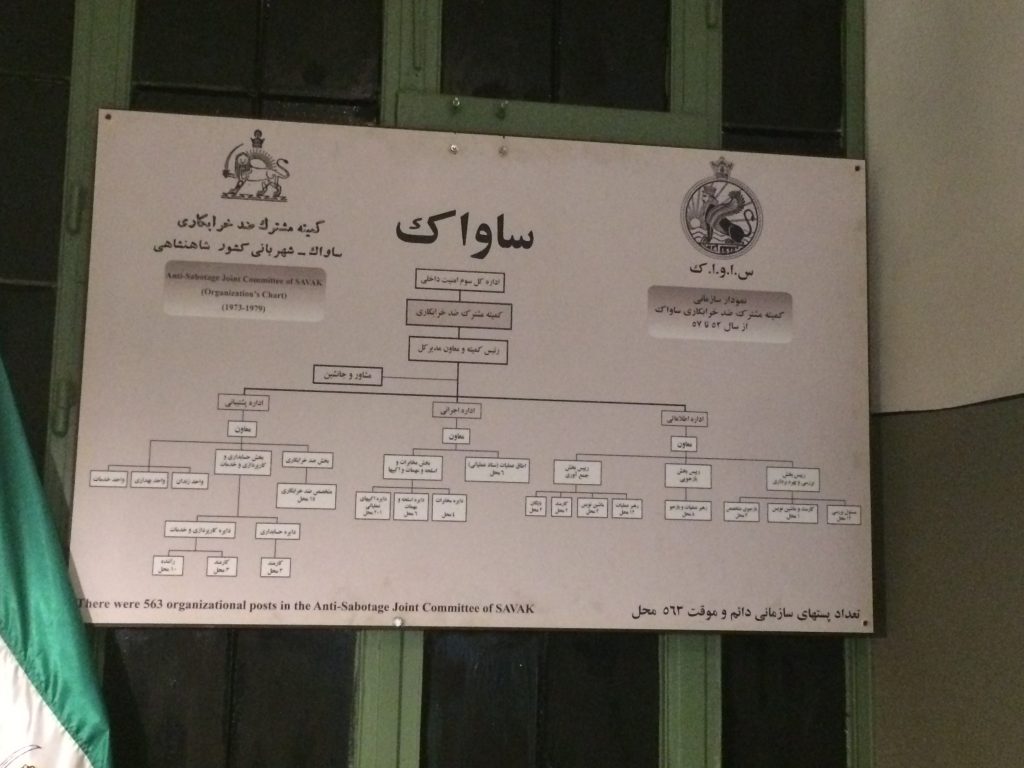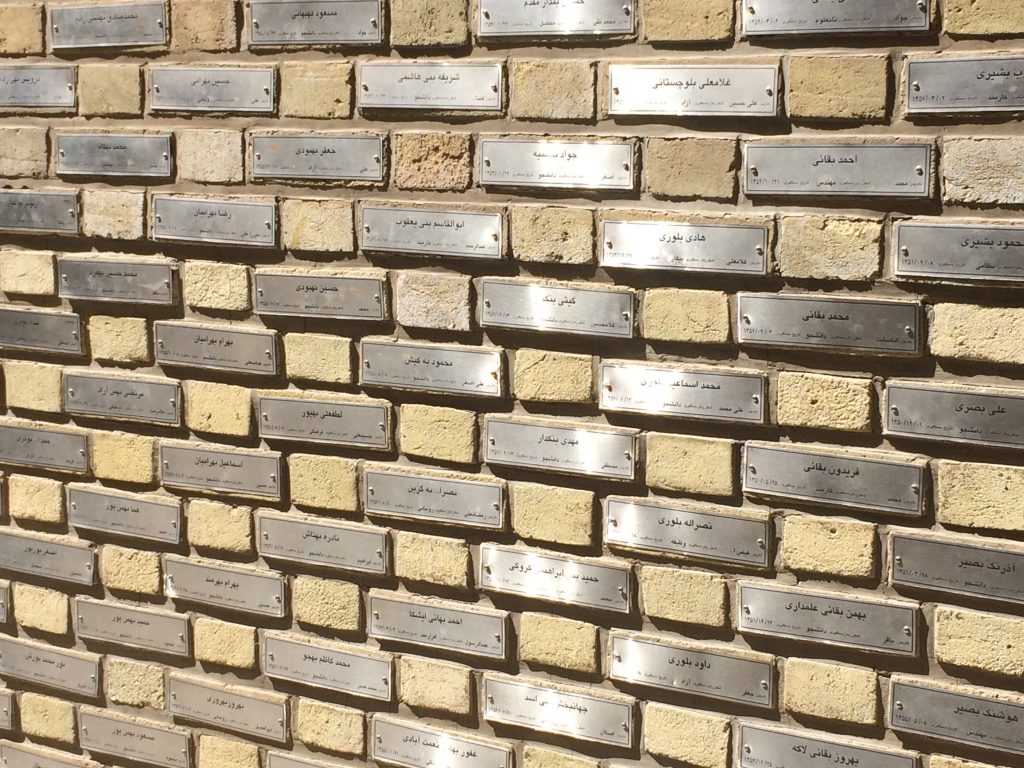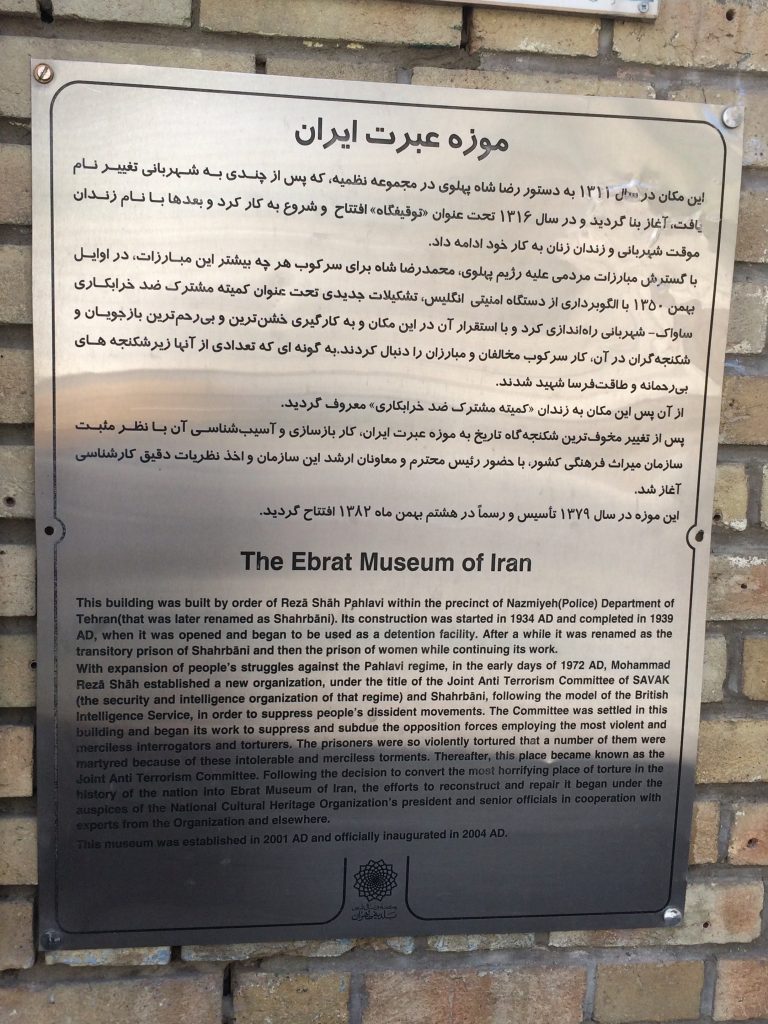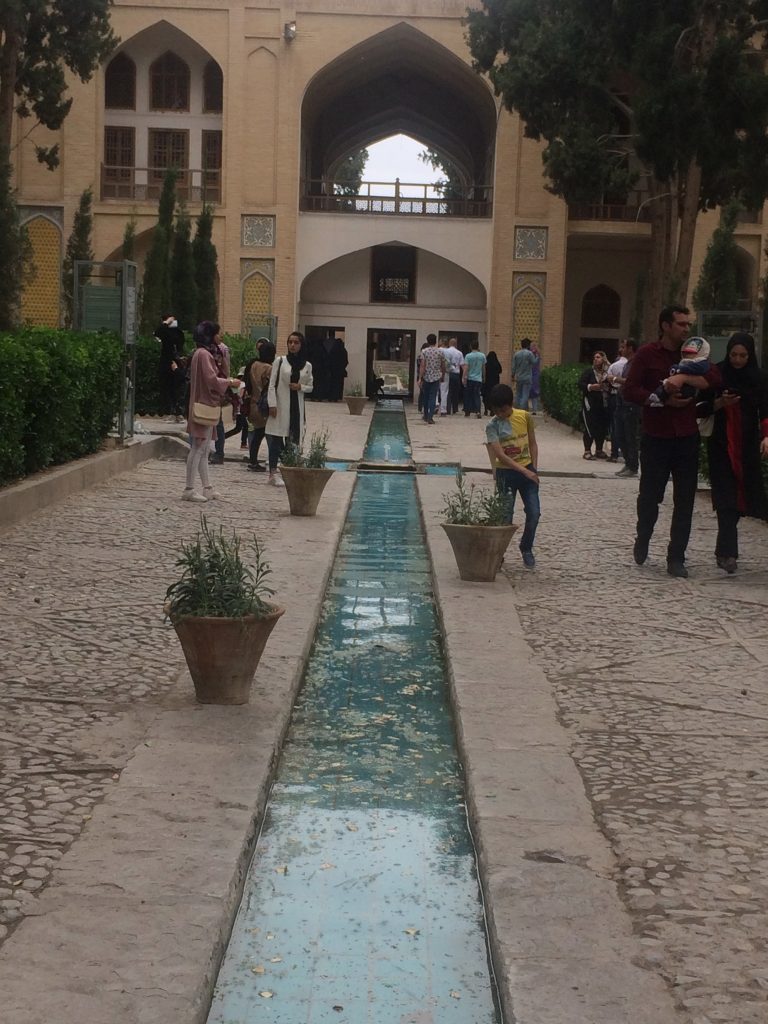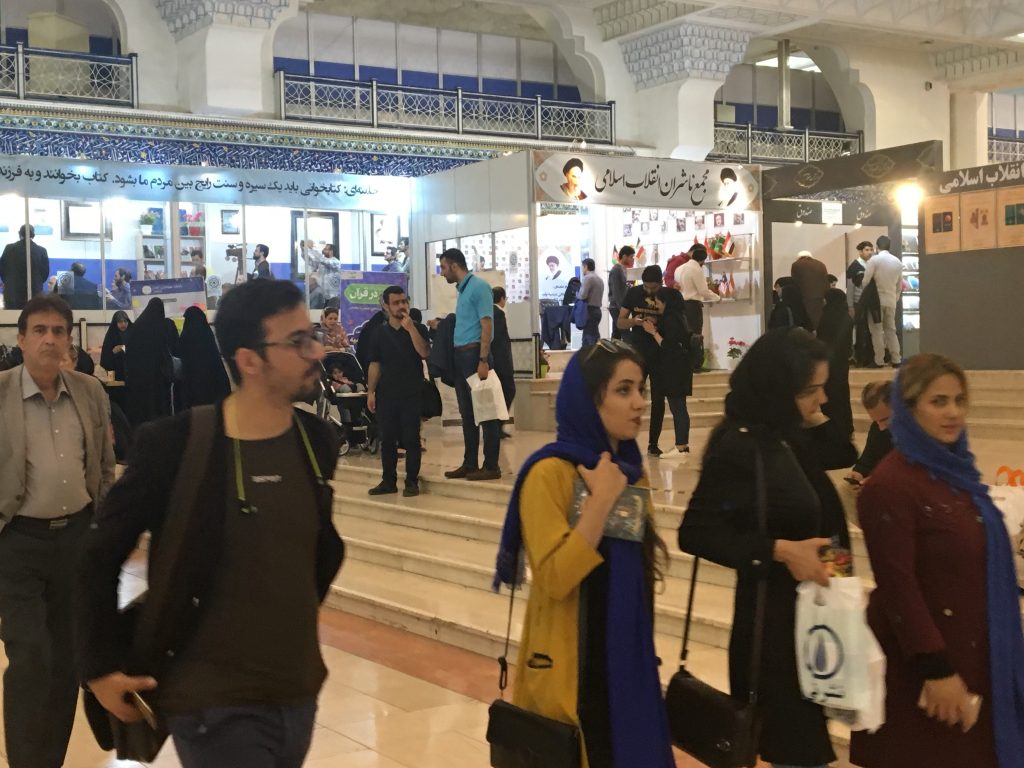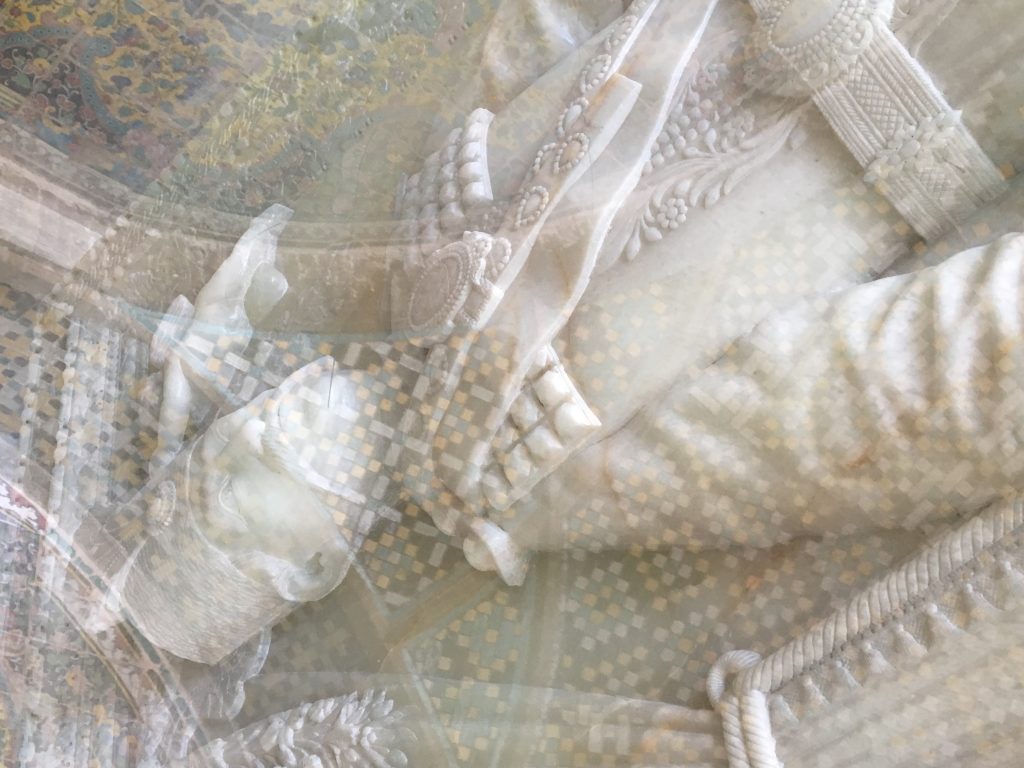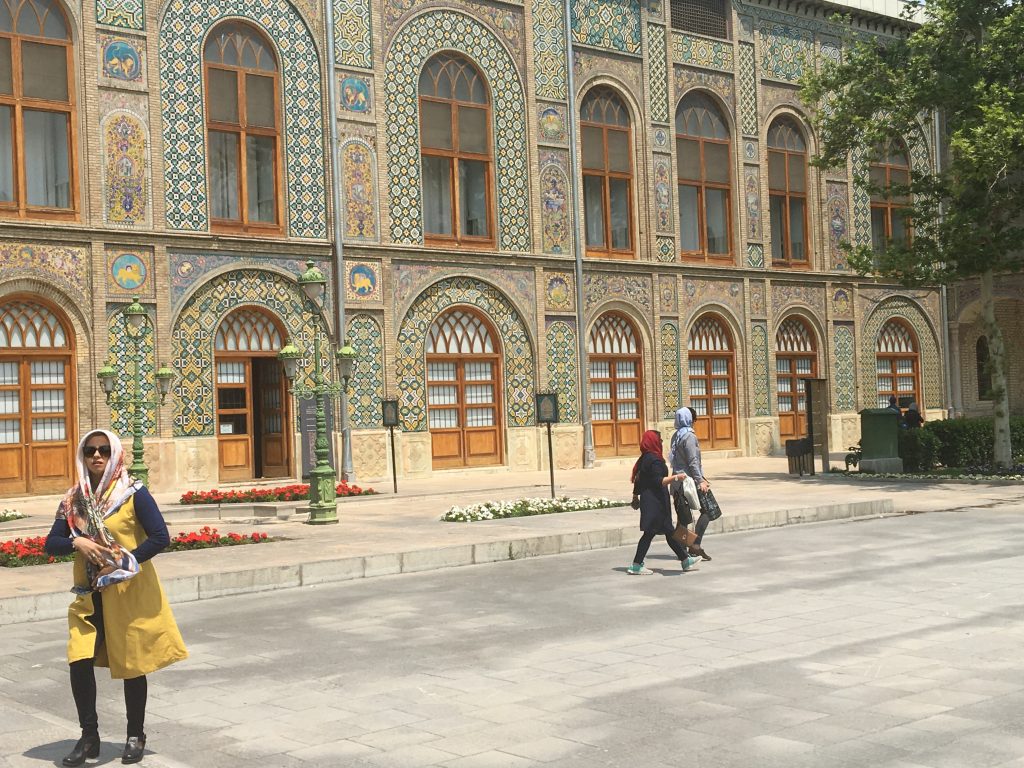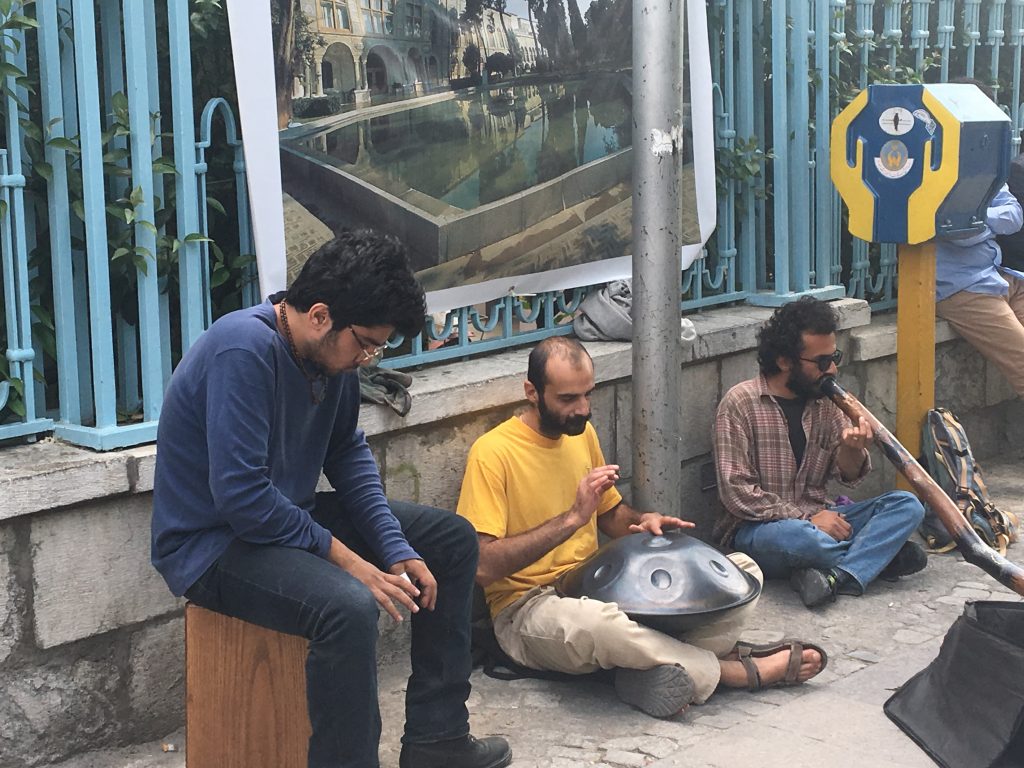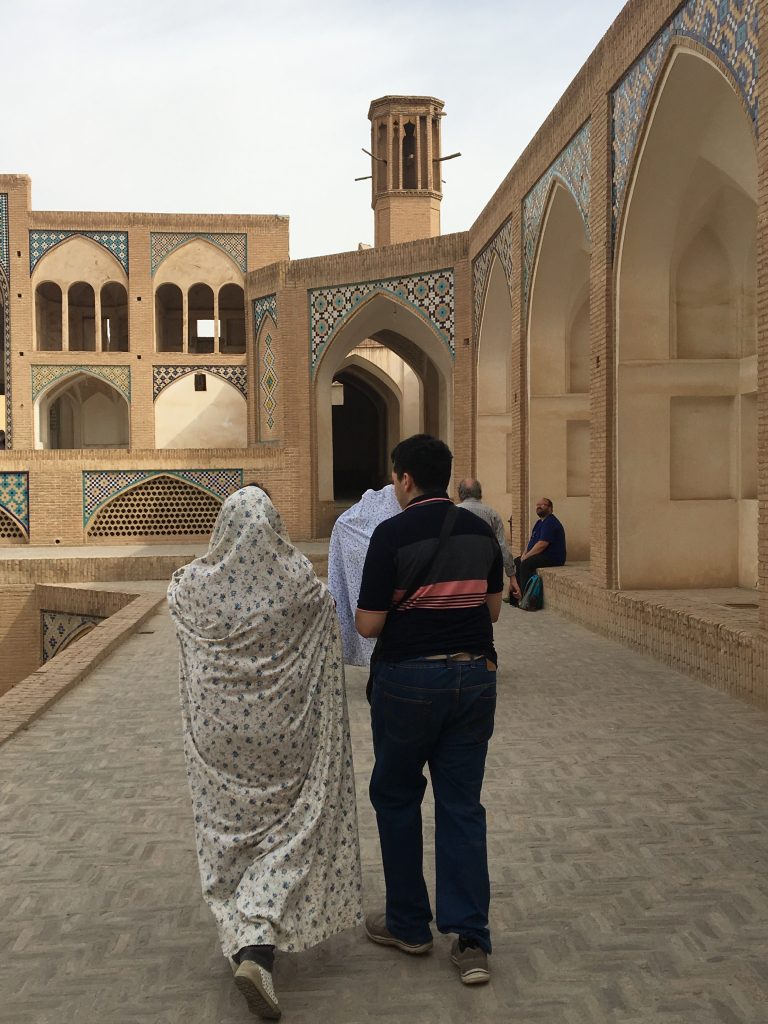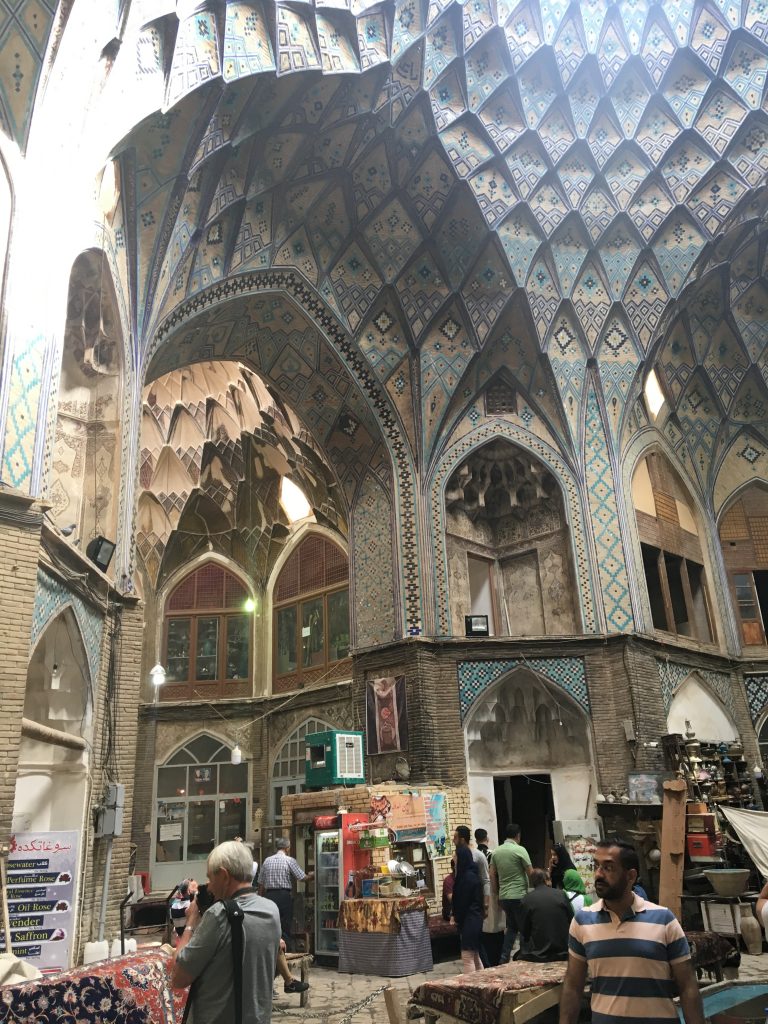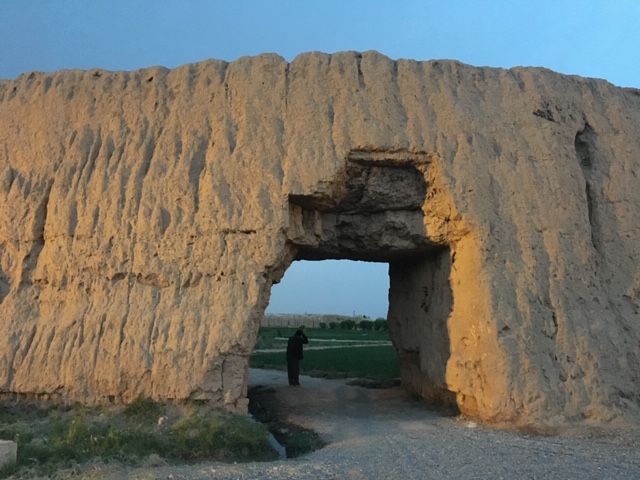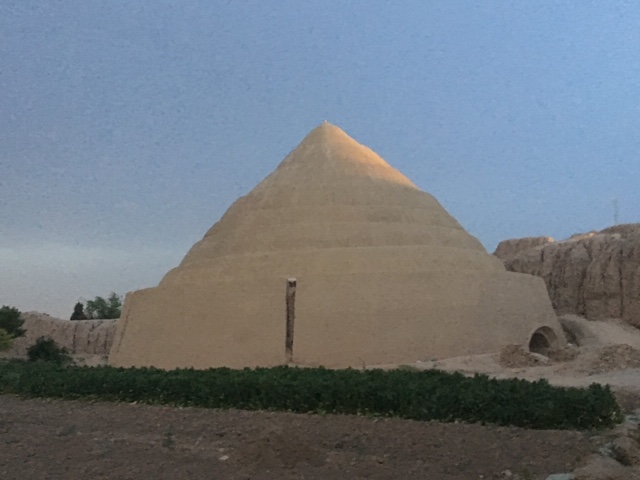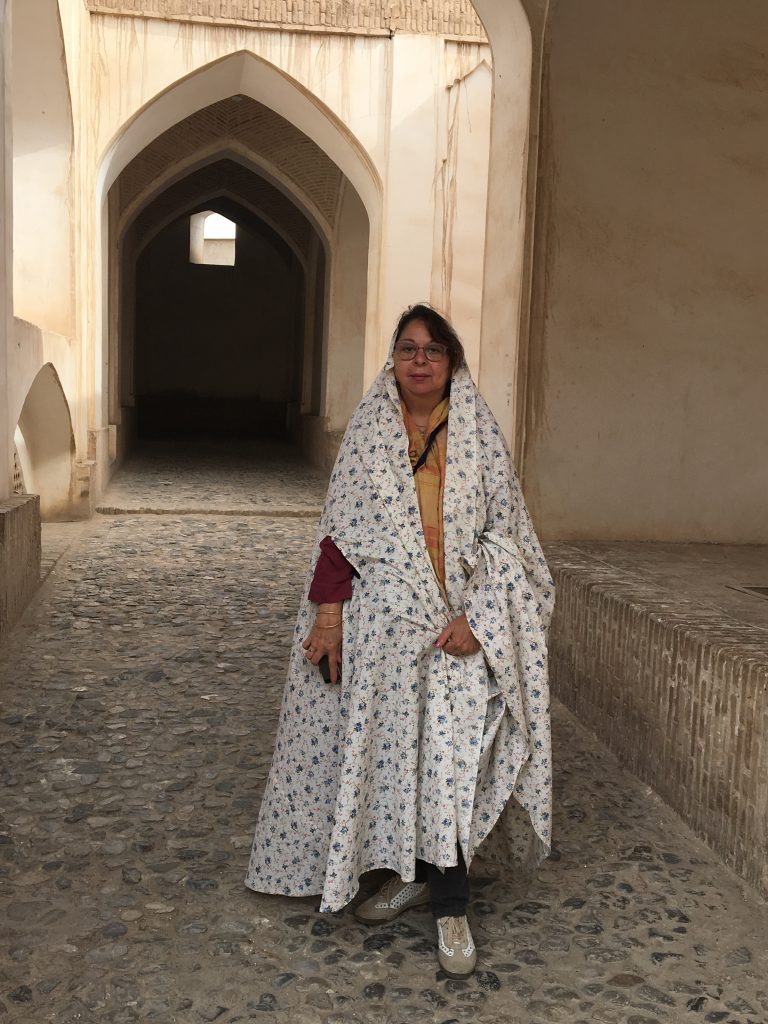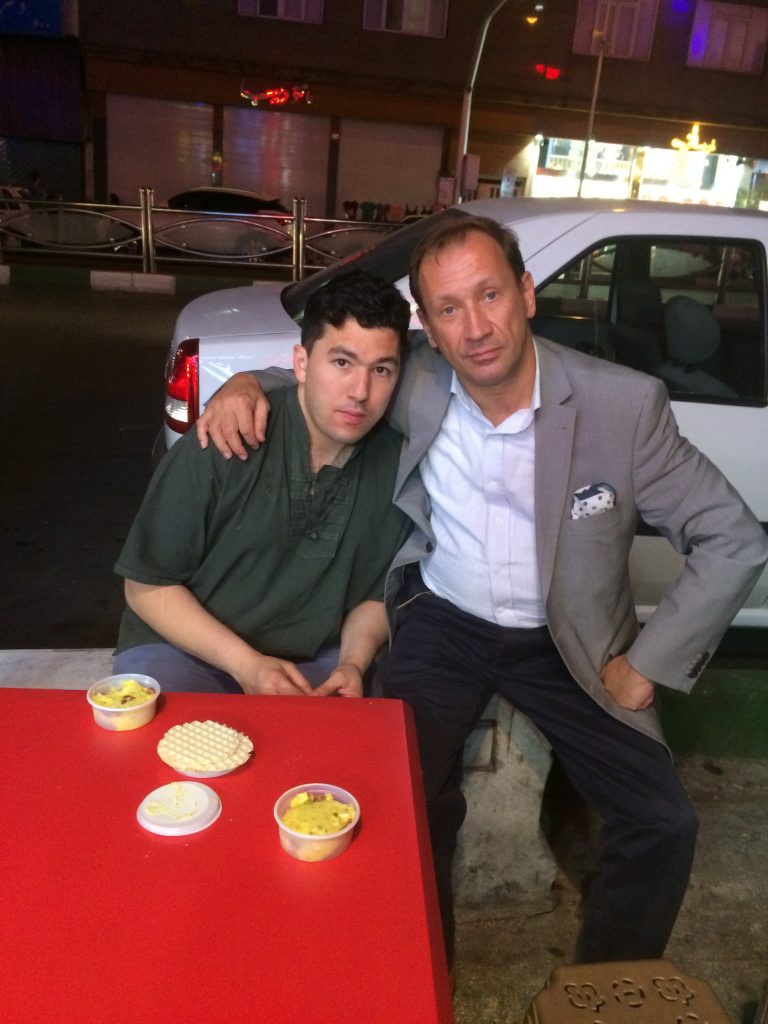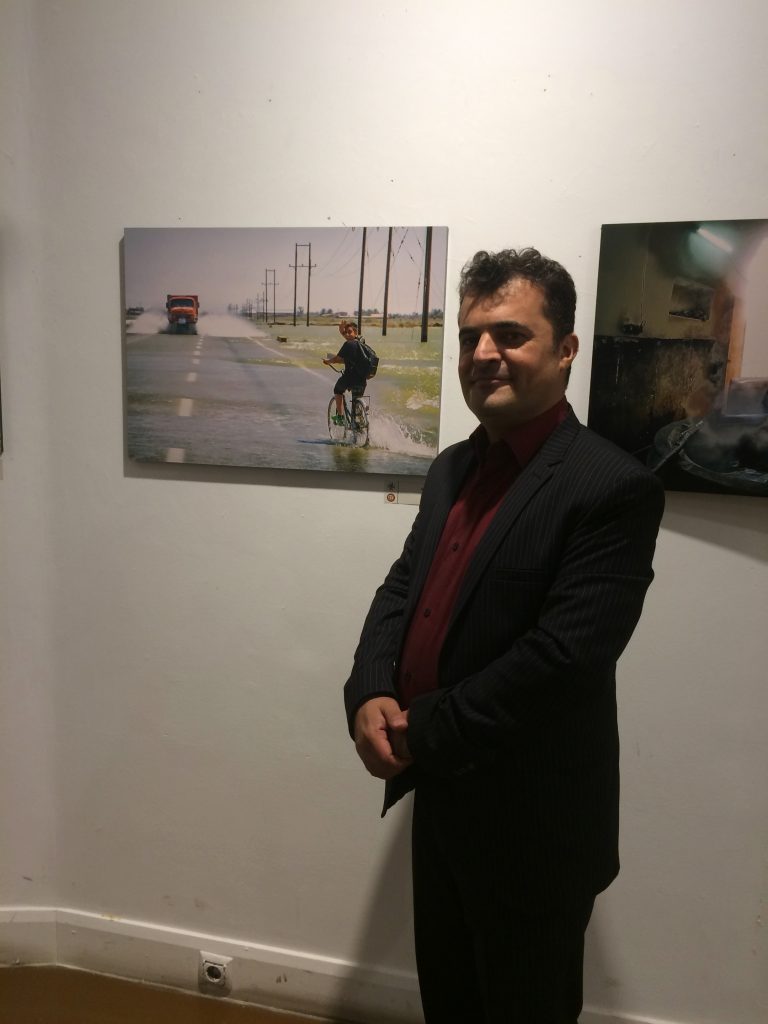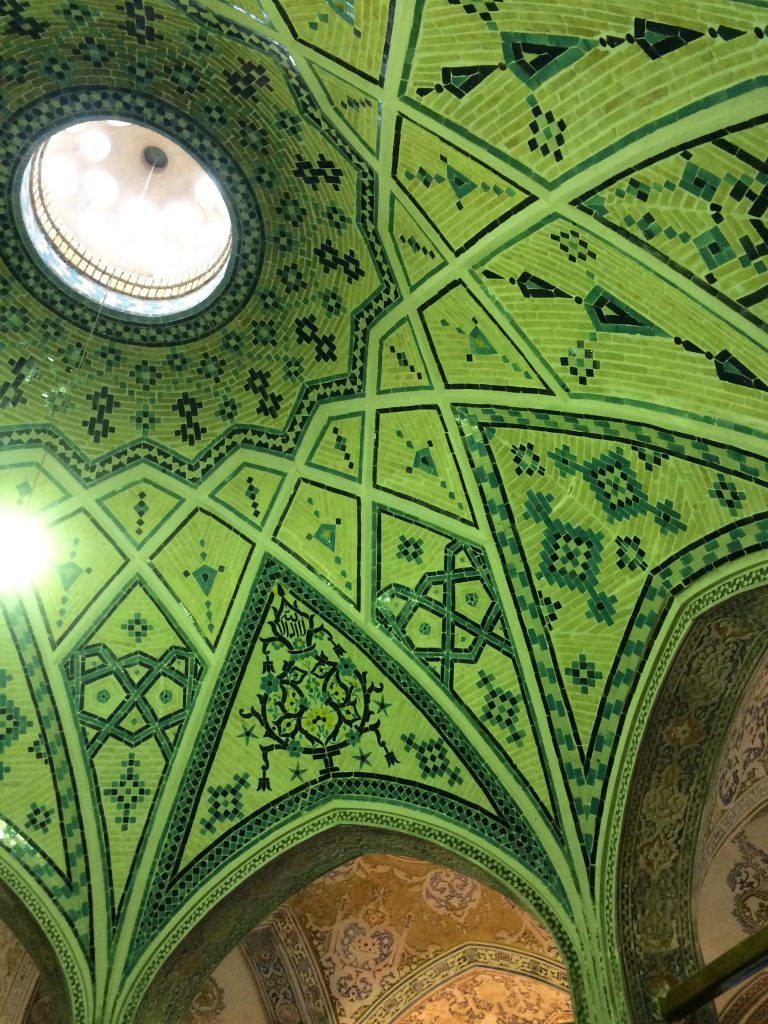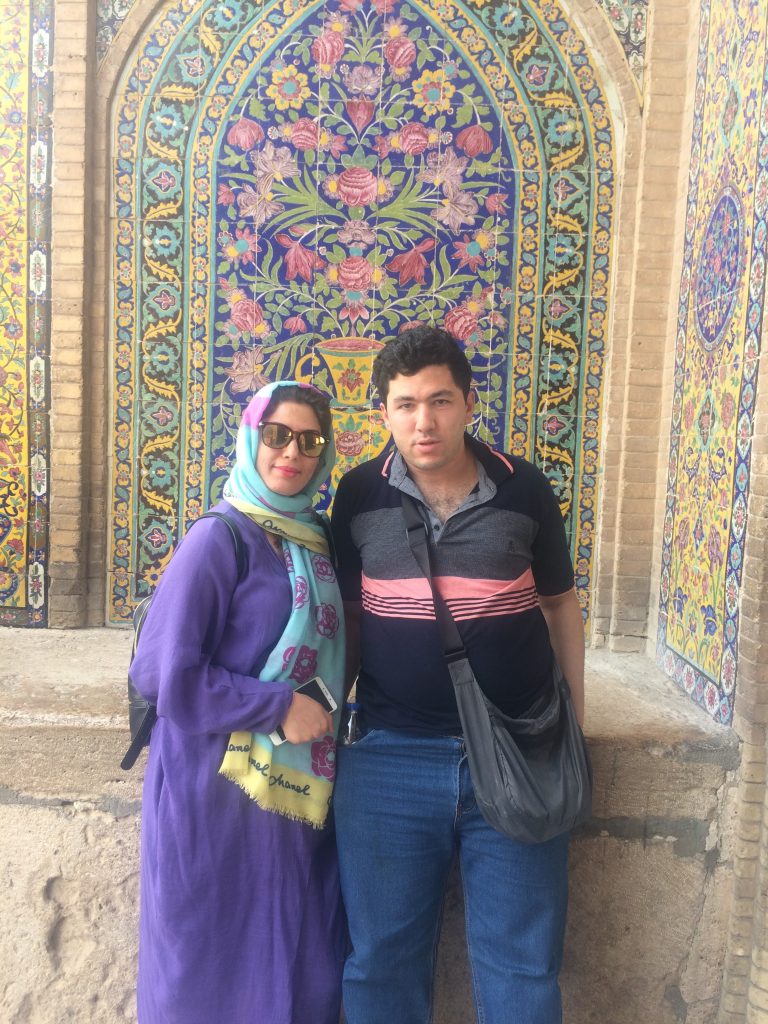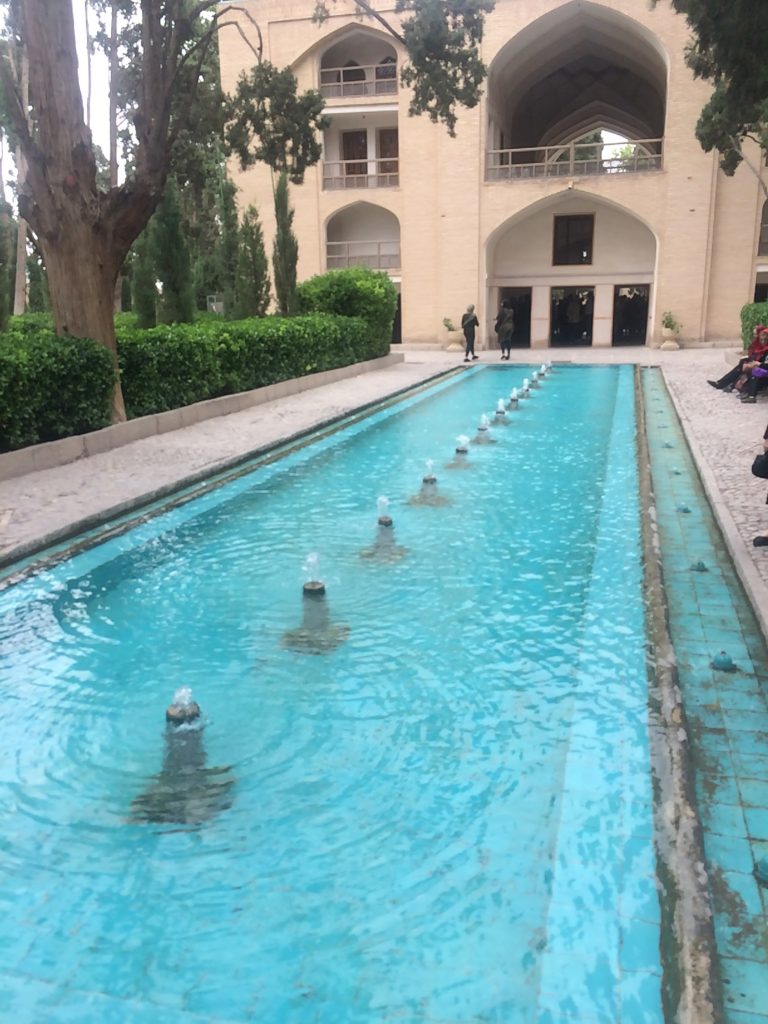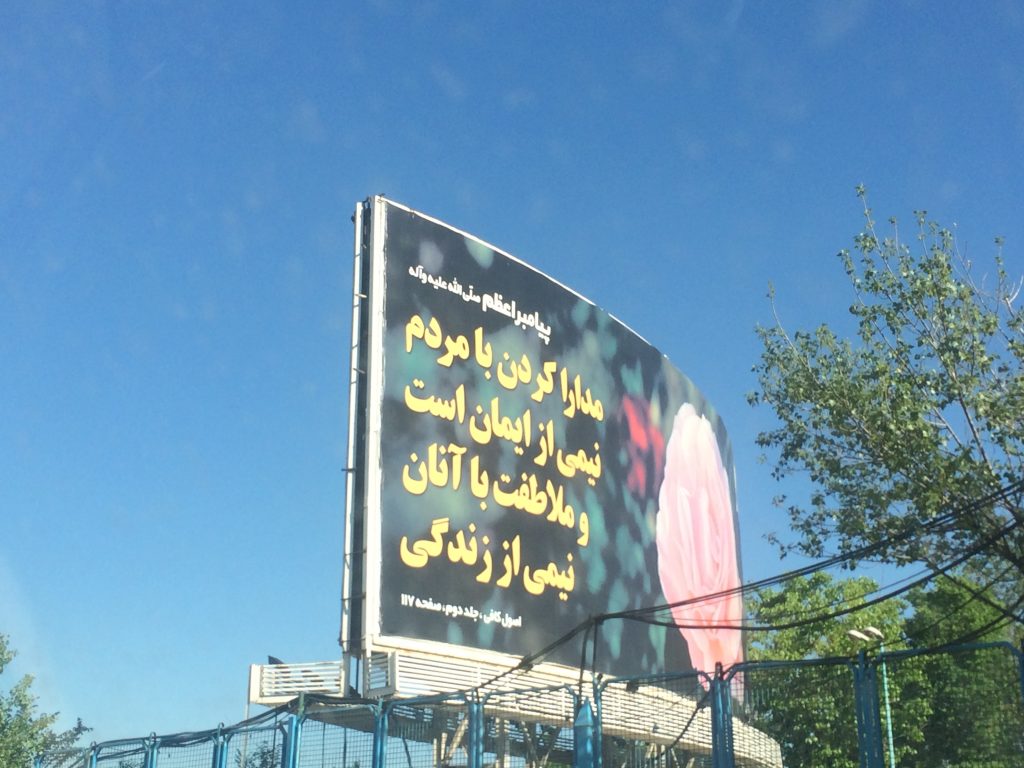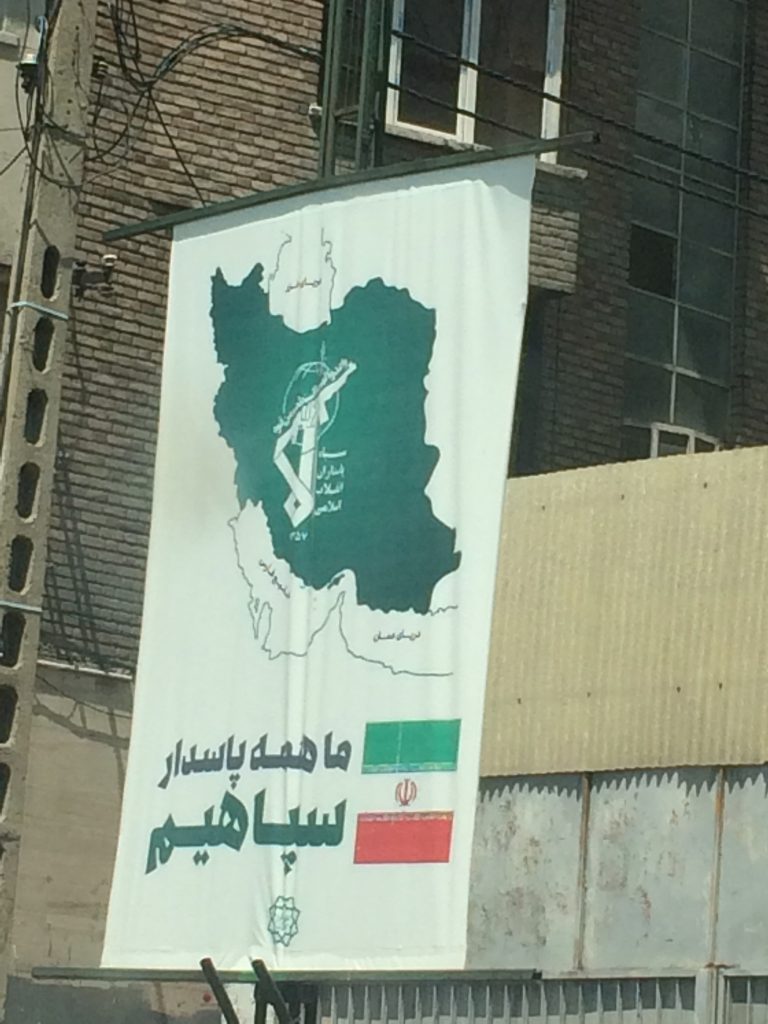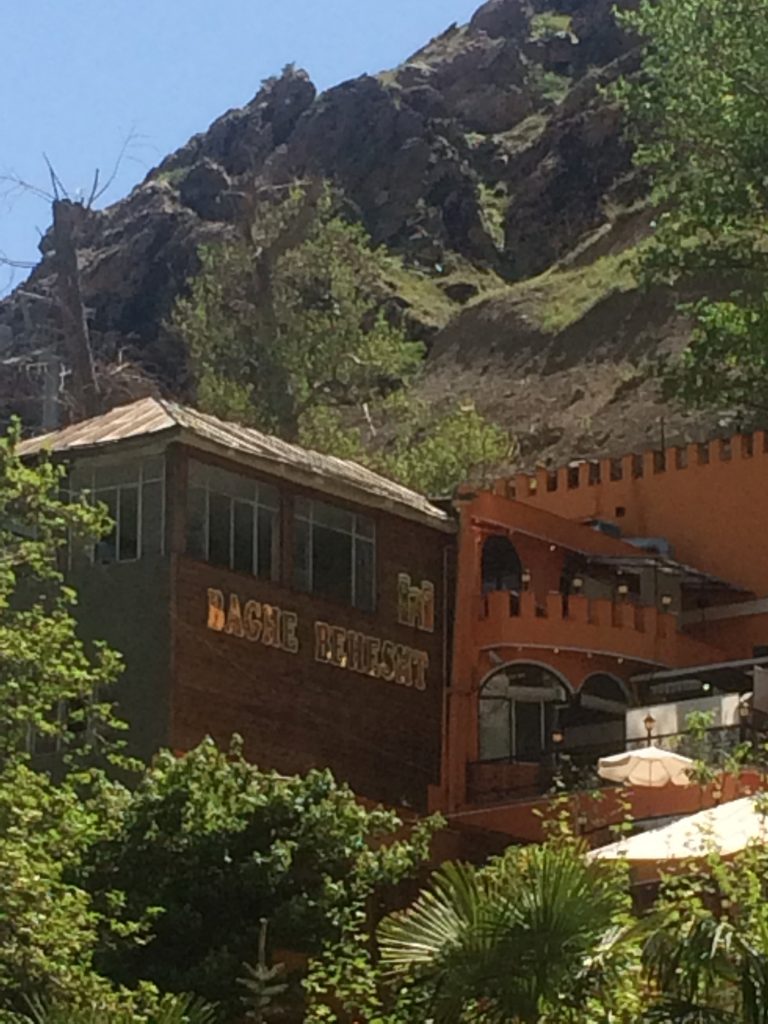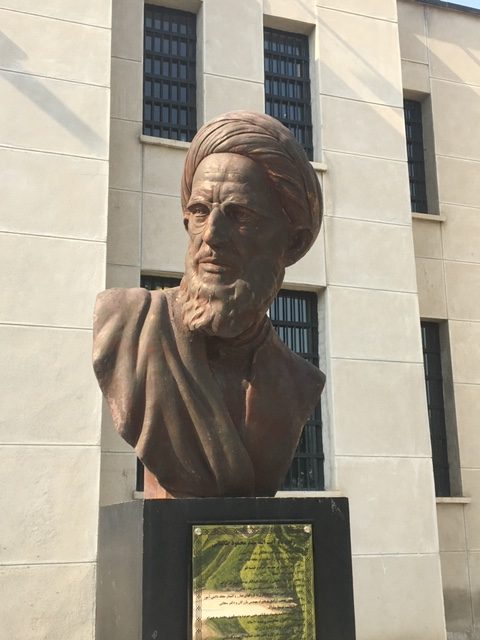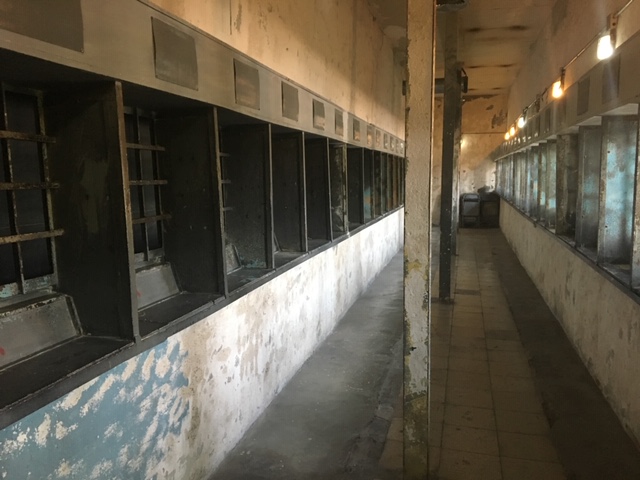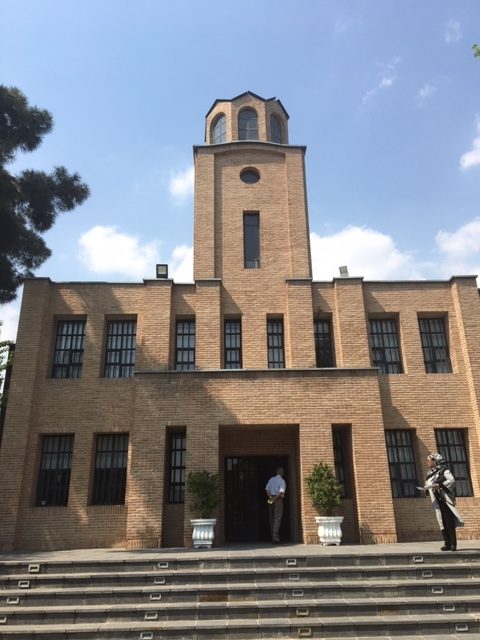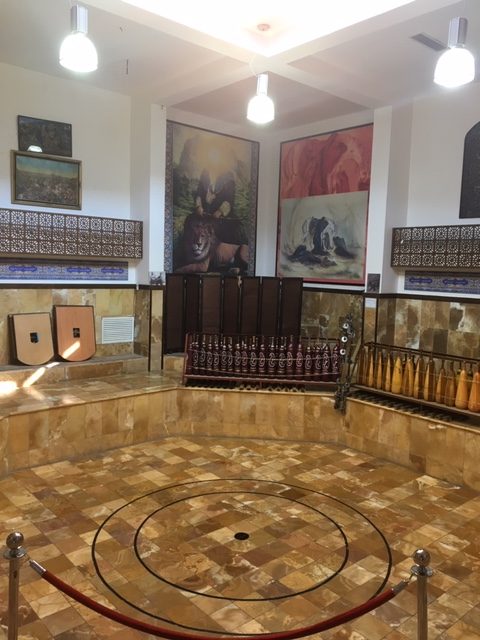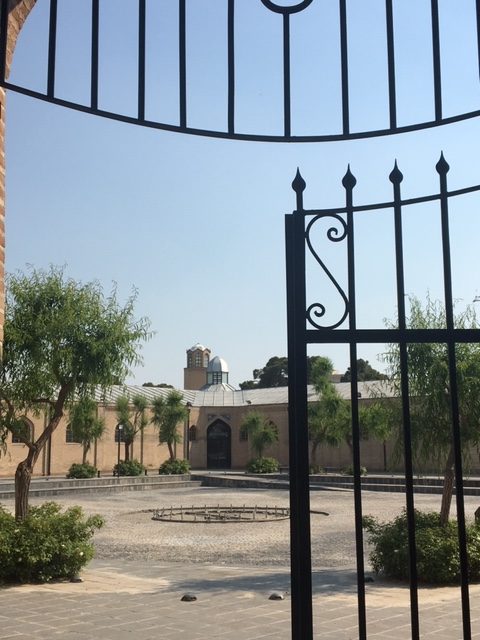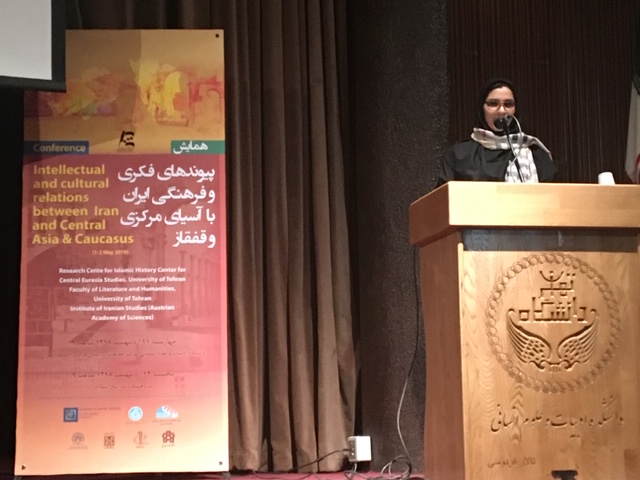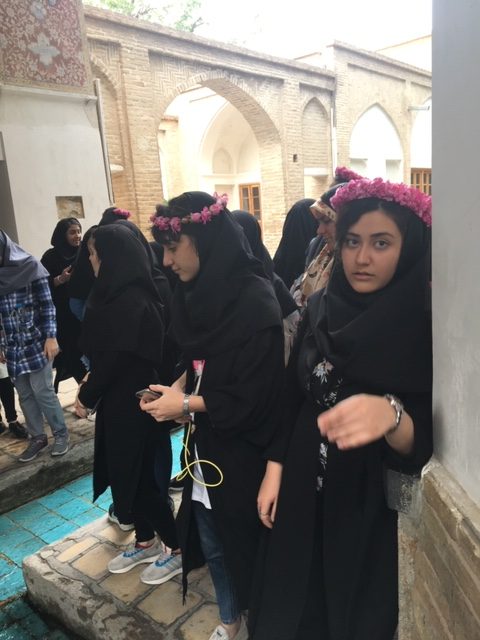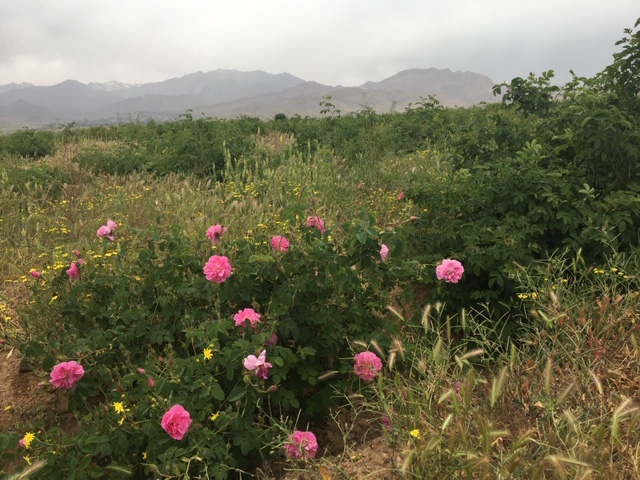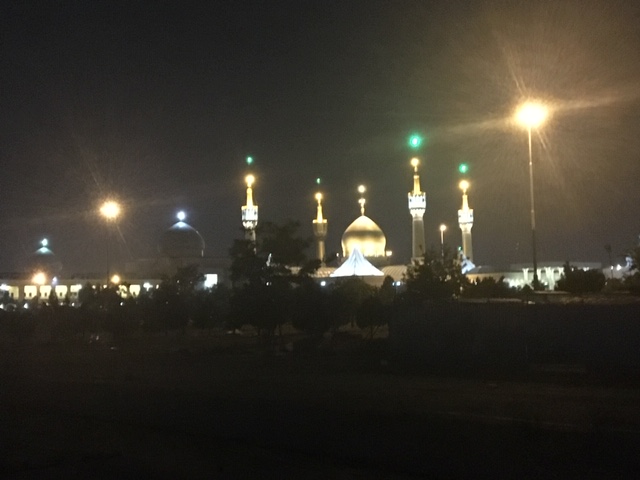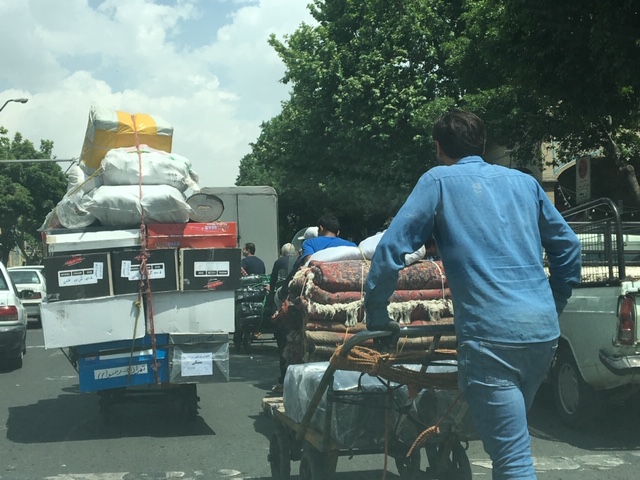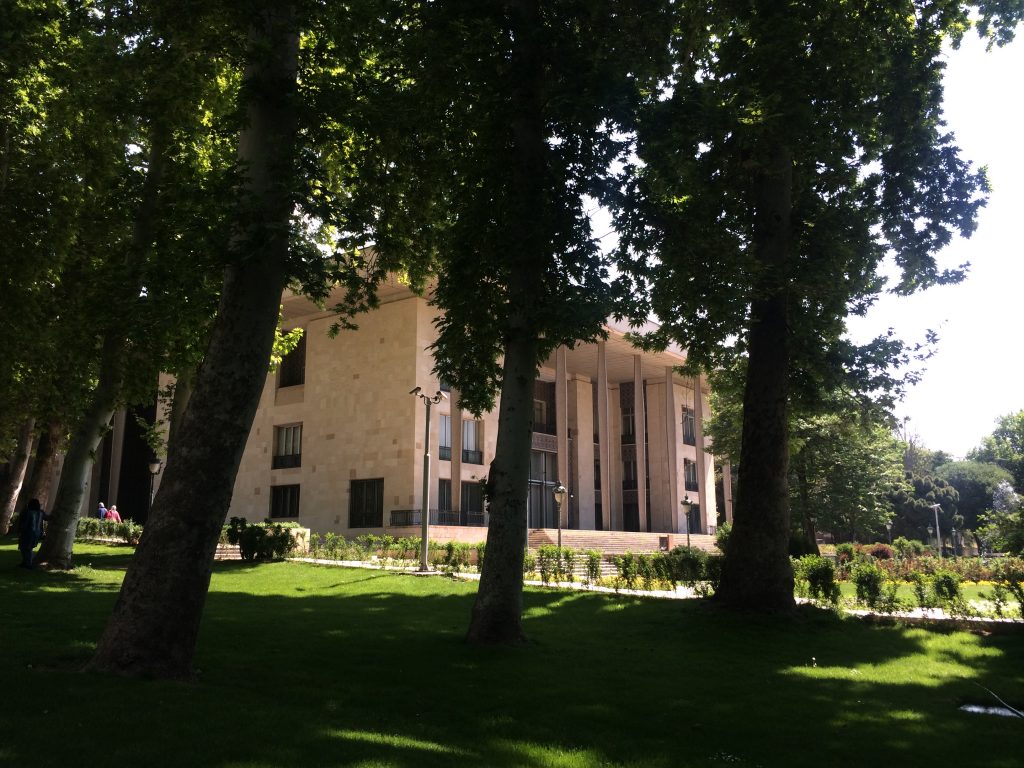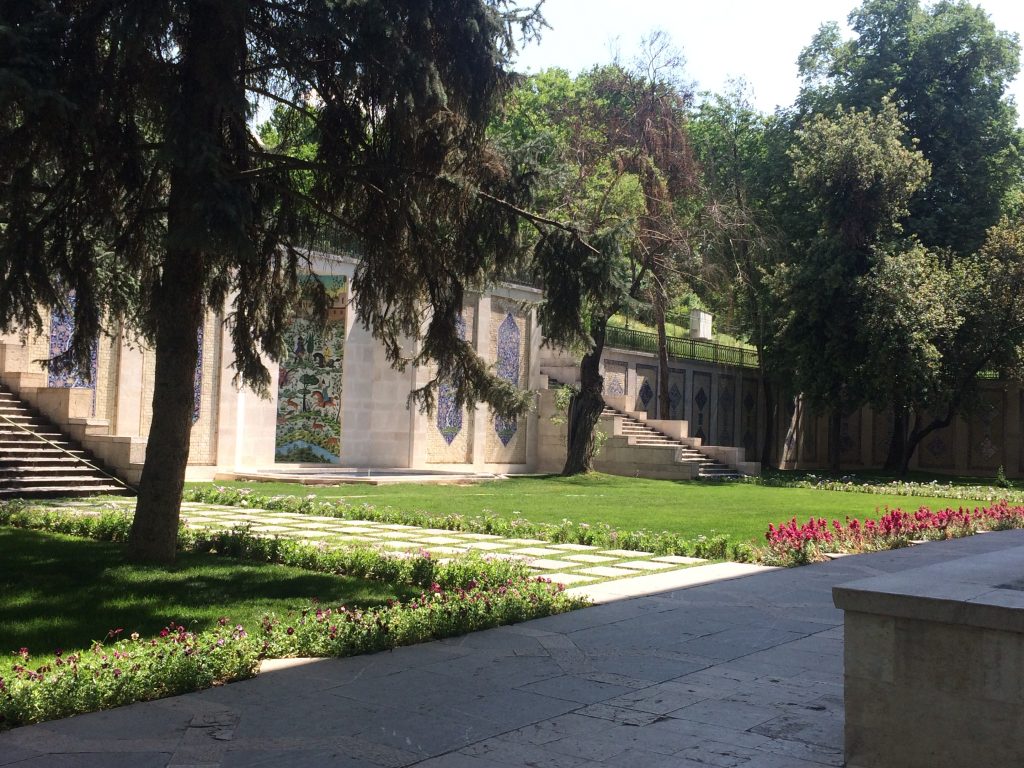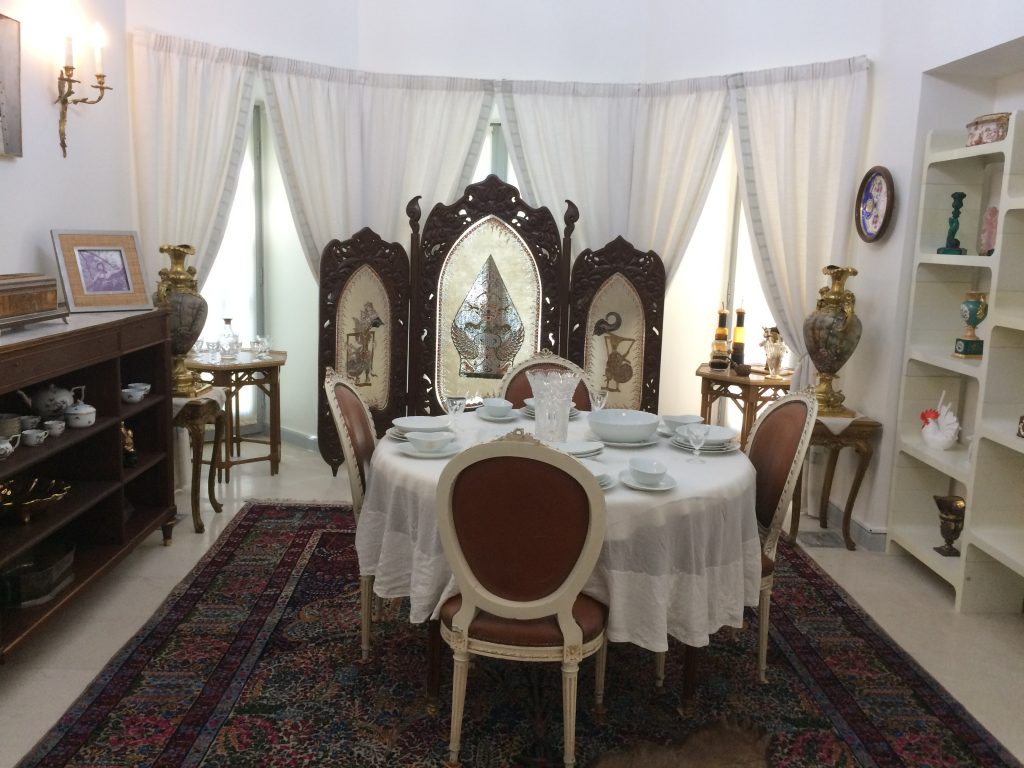May this year was a very pleasant time in Tehran when it comes to the weather. The abundant rain had cleared the pollution for a while, and the air was crisp and clean.
Otherwise, “pleasant” is not exactly the term that comes to mind describing the Iranian capital. One can only describe Tehran as a city on the run—frenetic, hectic, noisy, never tranquil (or boring). The traffic especially never lets up; it only slows down, momentarily, for an hour or so, before Iftar, the breaking of the fast during Ramadan, which this year started in early June.
We arrived a week before the beginning of Ramadan, just in time to take in the book fair, which every year is held in the Spring. The Tehran book fair must be one of the largest of its kind in the world. All of the interior space of the gigantic complex of Mosalla, which has been under construction for decades, was taken up by what seemed like thousands of booths filling endless rows spread out over many halls. Iran, it turns out, ranks ninth in the world when it comes to the number of titles it produces. The crowds, equal parts city folk and people from out of town, were huge, enjoying what was clearly a cultural as much as a social event.
Those who think that the bulk of the books published in Iran are about religion think twice. Literature, history, philosophy, sociology, the variety is as astounding as the volume is overwhelming. One booth that was particularly busy was the one where Michelle Obama’s “Becoming,” “Shodan,” was prominently displayed. It turns out, though, that two other translations of the same book exist, a sign of its popularity.
Iranians these days are frustrated about many things, political mismanagement, corruption, traffic, the cost of living. The strain of the sanctions, the high prices, the glaring gap between the well-connected rich and the poor—it is all seen and felt daily. Yet, there is that other element—people’s determination to try and enjoy life. They still go to the bazaar, and while complaining about prices, they still buy plenty of fruit and vegetables. As for beef, its price has become unaffordable for most Iranians.
Even if people are angry and fed up with the status quo they also haven’t lost their sense of humor.
Even if people are angry and fed up with the status quo they also haven’t lost their sense of humor. And there is always the Iranian way of solving (some) problems, with kindness and caring. A car hits a motorbike, its rider usually without a helmet; they get out and start arguing, but a good Samaritan intervenes and tries to mediate. It usually works.
In every Snap (the local equivalent of Uber) we took, the driver, usually a young man, often educated and knowledgeable, at times a university student, started to talk once he figured out that we had come from abroad. The standard question was, “why have you come here? Are you out of your mind?” My answer was always the same: Because I love Iran and we should not let go of it even if it is bleeding. A woman in a shop asked me you must be “Unvari” (From the other side), to which I replied, “yes,” feeling kind of guilty. She said, “lucky you.”
We talked politics, current conditions, and the future. To most, the future looks bleak. I met no more than two Iranians who were happy with Trump’s actions, but most were critical of the U.S. approach, especially given the fact that a war might be on the horizon.
One day, a rumor made the rounds that gasoline was going up and so every driver rushed to the pump to get more than his share. It happened to be just a rumor, though. Yet hoarding has become a daily occurrence, so much so that the Supreme Leader recently gave a long speech criticizing people who are abusing the situation.
Tehran University had a two-day symposium on the history of relations between Iran, the Caucasus and Central Asia, in collaboration with the Institute of Iranian Studies in Vienna. It was a well-organized event. The hall was filled with students and educators. The university looked greener and cleaner than I had ever seen it. Everywhere one saw posters about various educational events. A group of young women with their hijab and caps and gowns were giggling, happy that they had just graduated. Yet, it seemed clear that all these young people with their degrees do not see any future in finding a job.
We also visited Sa’ad Abad, Kakh-e Golestan, and the Niavaran Palace, where a workshop was being held for kids to learn about pre-Islamic Iran. It was a great initiative by Tehran University–engaging young kids in learning about their past in a hands-on way.
In Niavaran Palace, the summer residence of the last Pahlavi monarch, portraits of Reza Pahlavi were on display and even his toys were kept in a vitrine. In the library of the palace, the most famous work of sculptor Parviz Tanavoli, Hich (Nothing) was also in display. Farah Pahlavi was well-known for purchasing famous works of art.
While all these palaces are kept well and the grounds are watered regularly, looking spectacular, I could not help mentioning to the guard sitting in the office at the entrance of Niavaran that about 50 kilometers from here the home of the man who defended his nation against two superpowers was left unkempt and inaccessible to the public. He sighed and shook his head in sadness.
We visited three other museums: The first, Abgineh, the home of Qavam al-Saltaneh, is one of the most exquisite places in southern Tehran turned into a museum. The second, the Qasr Prison, built by the Russian architect Markov, has recently been turned into a fine museum depicting the history of imprisonment in Iran until the end of the Pahlavi regime. Even the place where prisoners exercised (the zurkhana) was left in impeccable condition, with pictures of famous Pahlevans including the famous Gholam Reza Takhti adorning the walls.
Yet, at the far end of the grounds, there was the much more somber building where political prisoners were kept in solitary confinement, including many famous people. There the grim cells, which had once housed my own father, Ayatollah Taleghani, Mehdi Bazargan, Khosrow Golesorkhi and many illustrious men were once the “guests” of the Shah, had been left unchanged. I learned something new from the guards. When referring to Ab-e khonak bokhor, which means go to prison, it actually refers to the two streams that flow underneath the prison where prisoners drank and used the water from the wells!
The third museum we visited was the ‘Ebrat Museum. Once the infamous Komiteh-ye moshtarak zed-e kharab-kari later turned into Zendan Towhid, this place is a reminder of a brutal past, the time when SAVAK interrogated and tortured political prisoners. Plaques of all who once set foot there, men like Hamid Ashraf, the famous guerrilla leader, cover the walls of the entrance corridor. The Cadillac of General Nasiri is on display. Once inside, one is confronted with the portrait of Shahriari, the infamous torturer, and the desk SAVAK director Sabeti. In the various cells, torture of various types and methods is depicted. The entire place is a gruesome reminder of how the Shah’s regime and then the IRI dealt with their opposition. While photos of all religious figures who once set foot in this prison, not a single photo of any of the leftists incarcerated here are shown. I made a remark about this to the guards but they were clueless and in fact one of them said with confidence that they went to other prisons, not here!
I guess history is told in a perverse way even if they call it Muzee ‘Ebrat—the Museum of Lessons to be Learned. We don’t learn, do we?
Everywhere, there were busloads of foreign tourists, mostly French, Italian, and Spanish ones. In fact, the flight from Doha was filled with foreign tourists. I also saw many young Chinese travelers, even young women. Not only is May a good time to visit the country, but with the rate of the euro and the dollar against the falling toman, Iran is also a bargain for most foreigners. We met an Australian near the Grand Bazaar who enthusiastically told us that this was his third time visiting Iran and he just loved it. In fact, he had a tattoo on his arm, “I love Iran” and another tattoo of the Farvehar sign.
Since many Iranians are not able to go abroad as visas are not granted that easily, and even countries that do grant them have become unaffordable for most, Iranian domestic tourism is booming. We witnessed this during our visit to Kashan, the city that is famous for its many old merchant homes from the Qajar period, some of them turned into boutique hotels, for its bathhouses, and for the beautiful mosque of Agha Bozorg. The old city and especially the bazaar, where one can still see shops selling the famous silks of the city, was filled with Iranian tourists.
In the famous Bagh-e Fin, where Amir Kabir had been assassinated in 1852, there were thousands of visitors from all over Iran. Young girls, the hair loosely covered by multicolored hejabs, had rows of pink roses around their heads, laughing and talking. I asked to take their photos, which in their shy manner they accepted.
The month of May is the season of Golab-giri in Kashan, where the pink roses smell divine. Golab is made from a special rose through a very distinct process. We had a chance to visit the largest Golab factory in Iran, located outside Kashan.
On the way to Kashan, you pass by Behesht Zahra, reportedly the world’s largest cemetery where thousands upon thousands are buried, with Khomeini’s large shrine looming in the background. Further south the mountains lining the road come in strange forms and many shades of red. The land was greener than usual because of the abundant rains; even though some attribute the greenery around Qom to water being diverted to the city. Water shortage is an issue now and is certain to become a critical issue in the future.
Indoctrination is a way of life here. It has always been that way. Everywhere there are of course the usual posters and murals depicting shohada (martyrs), those killed during the Iran-Iraq war and some of the nuclear scientists gunned down since.
In this holy month, the posters, adorned with verses from the Koran or sayings of Ruhollah Khomeini or Ali Khamenei, are more vivid as their slogans exhort people to be good citizen, be devout and generous. Many posters proclaim the importance of women’s hijab. But besides the women who wear the black chador or double hijab, this phenomenon is surely a thing of the past for many women, young and old. A little scarf or a long one covers barely their bleach-blond hair. In some cases, in a few coffee shops, I saw young women without any hejab.
Children in crisp white shirts were singing nationalist songs, proud of being Iranian. The constant radio talks about the importance of the Persian Gulf is clearly a way of approaching people through their nationalist sentiments.
At night, I made sure to watch the many Iranian channels. They range from bad to really bad. Of course, the headlines were all about Trump, Pompeo and Bolton’s aggressive stance towards Tehran.
But there are the usual sermons of Ramadan, a cleric addressing men (never women), Iranian TV series, some played by unprofessional actors, and then there was the dubbed Chinese series. It was kind of interesting to watch a Chinese series on Iranian TV!
I went with a friend to see his photos of areas devastated by the recent floods. He and two other young photographers were exhibiting their work at Khaneh Honarmandan in the southern part of Tehran. The House of Artists was busy with different exhibitions of visual arts. All sorts of documentaries were also shown on a daily basis.
Visiting southern Tehran, I went to see a street that I used to go to every day— Manuchehri street. This Armenian neighborhood is where my school, Jeanne D’Arc, was located. Incidentally, the Jeanne d’Arc school was also built by Markov, the same architect who built Qasr prison. Manuchehri Street, which used to be full of antique shops, still has many shops but the ones selling antiques are all gone. I rang the bell on the school and asked if I could go inside the grounds to take a look. The man who answered the call said I needed permission from the Ministry of Education! Explaining that this had been school didn’t help: my request was denied. Oh, well, perhaps next time.
One night after the U.S. threats, both Khamenei and Rouhani spoke to a large crowd. I was watching it on TV.
Khamenei spoke about the importance of young revolutionary youth to be more involved and start from zero. What does he mean that they have to start from the bottom and rise up while most of the wealth is amassed by the ones who are connected? How is that possible?
Rouhani started his speech by saying 28 Mordad 1332. “Do you remember this date?”—referring to the Coup of 1953.
He ridiculed Trump by saying that he tweets that he has no intention of starting a war with Iran but then sends the U.S. fleet to the Persian Gulf. Well, the Supreme Leader is right about that.
On his May 1st speech, he talked about the importance of building homes for those devastated by the recent floods and that workers should own their homes at some point in their lives. All good talk but where is the beef?
I am not sure how much ordinary citizens pay attention to these speeches. It is after all pure propaganda and in fact a way to deflect attention from the very bad economic conditions which could lead to total paralysis if no drastic measure is taken. So far, the Islamic Republic has been able to depend on internal production and import Chinese products but the current situation is like a pressure cooker. Yet it seems clear that Iranians do not have the will or the inclination for a violent insurrection.
In all, it is the people on the streets of Tehran and in towns and villages all over Iran who are suffering, suffering from inhumane sanctions, suffering from the mismanagement by the authorities, from the widespread corruption. Even the Supreme leader referred to both mismanagement and corruption, exhorting the government to combat these ills.
I left Iran with mixed feelings. Positive about its people who are tolerant and still good-natured even under a sanctioned regime and all the daily struggles, pessimistic about the overall situation. As a woman in a hairdresser said, Iran is not Iran anymore, it is now Viran (destroyed).
Iran and Iranians have great potential. But it needs to reconnect with the world, including America, to reach that potential.
I am not sure if I agree with her, though. Iran and Iranians have great potential. But it needs to reconnect with the world, including America, to reach that potential.
I left with some sadness, as if I left a part of me in a place where I was born and raised. I wish her and her people the best.
In Sohrab Sepehri’s words, the famous poet from Kashan, “Life is not empty, there is kindness, there is apple and there is faith.”
Photos were taken by Fariba Amini


